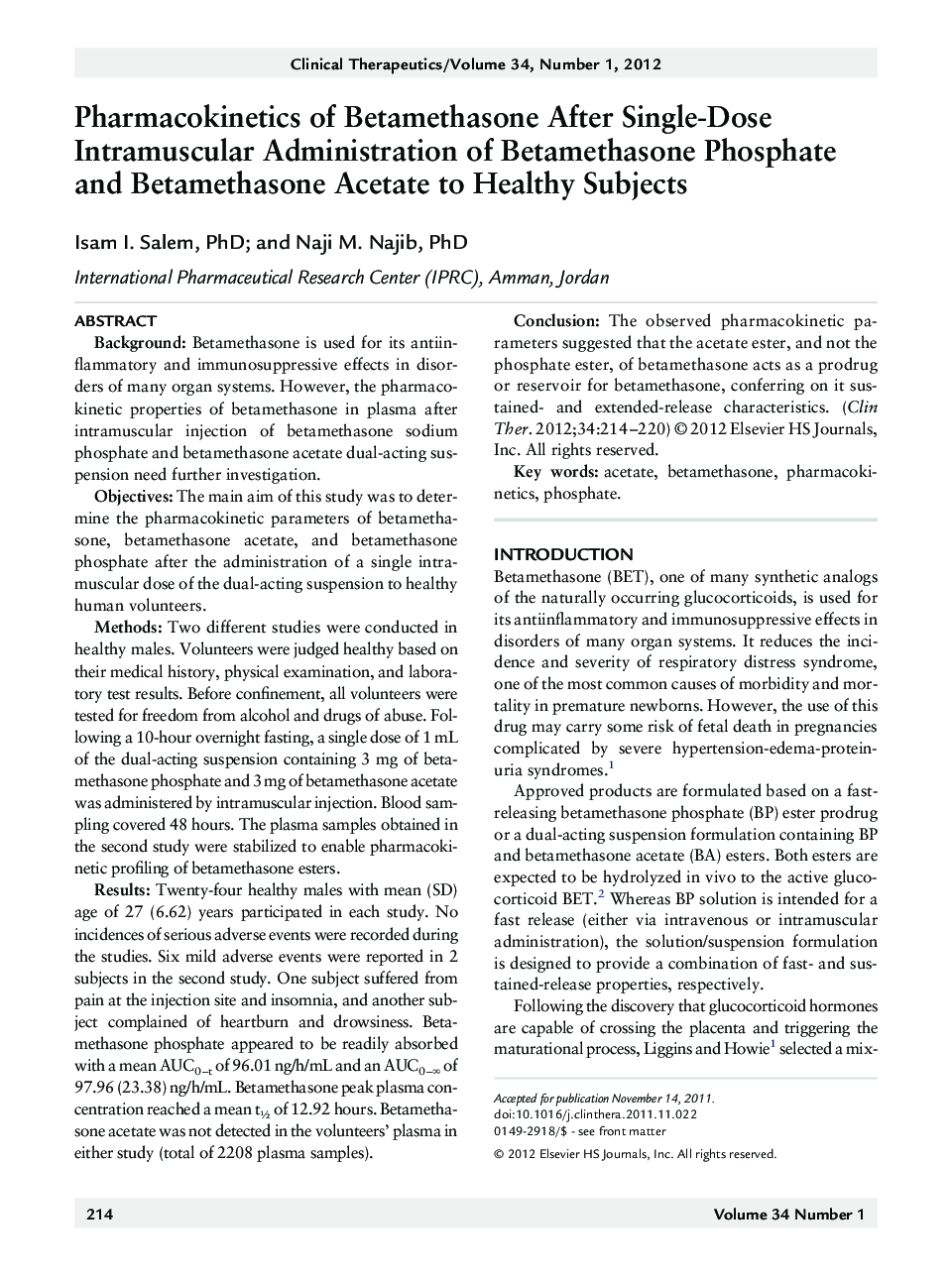| Article ID | Journal | Published Year | Pages | File Type |
|---|---|---|---|---|
| 2527383 | Clinical Therapeutics | 2012 | 7 Pages |
BackgroundBetamethasone is used for its antiinflammatory and immunosuppressive effects in disorders of many organ systems. However, the pharmacokinetic properties of betamethasone in plasma after intramuscular injection of betamethasone sodium phosphate and betamethasone acetate dual-acting suspension need further investigation.ObjectivesThe main aim of this study was to determine the pharmacokinetic parameters of betamethasone, betamethasone acetate, and betamethasone phosphate after the administration of a single intramuscular dose of the dual-acting suspension to healthy human volunteers.MethodsTwo different studies were conducted in healthy males. Volunteers were judged healthy based on their medical history, physical examination, and laboratory test results. Before confinement, all volunteers were tested for freedom from alcohol and drugs of abuse. Following a 10-hour overnight fasting, a single dose of 1 mL of the dual-acting suspension containing 3 mg of betamethasone phosphate and 3 mg of betamethasone acetate was administered by intramuscular injection. Blood sampling covered 48 hours. The plasma samples obtained in the second study were stabilized to enable pharmacokinetic profiling of betamethasone esters.ResultsTwenty-four healthy males with mean (SD) age of 27 (6.62) years participated in each study. No incidences of serious adverse events were recorded during the studies. Six mild adverse events were reported in 2 subjects in the second study. One subject suffered from pain at the injection site and insomnia, and another subject complained of heartburn and drowsiness. Betamethasone phosphate appeared to be readily absorbed with a mean AUC0–t of 96.01 ng/h/mL and an AUC0–∞ of 97.96 (23.38) ng/h/mL. Betamethasone peak plasma concentration reached a mean t½ of 12.92 hours. Betamethasone acetate was not detected in the volunteers' plasma in either study (total of 2208 plasma samples).ConclusionThe observed pharmacokinetic parameters suggested that the acetate ester, and not the phosphate ester, of betamethasone acts as a prodrug or reservoir for betamethasone, conferring on it sustained- and extended-release characteristics.
